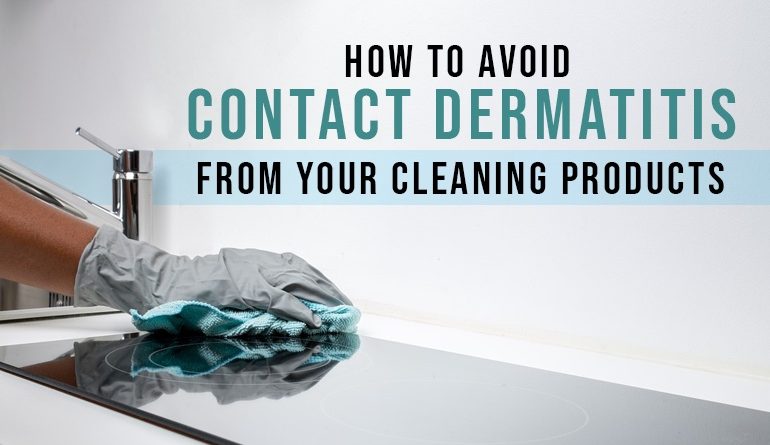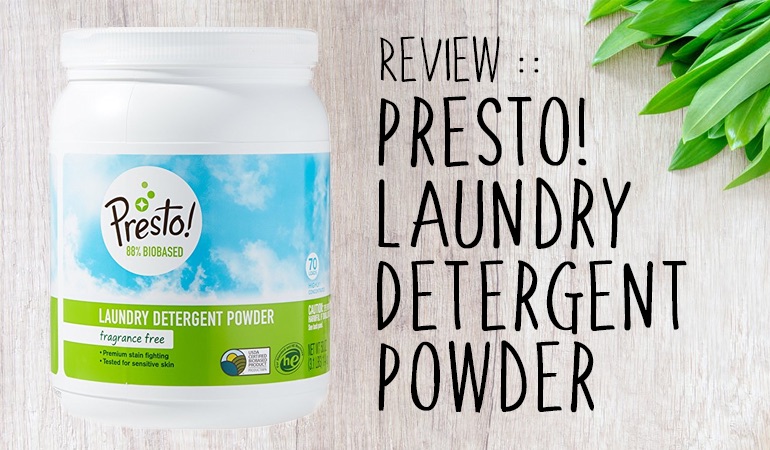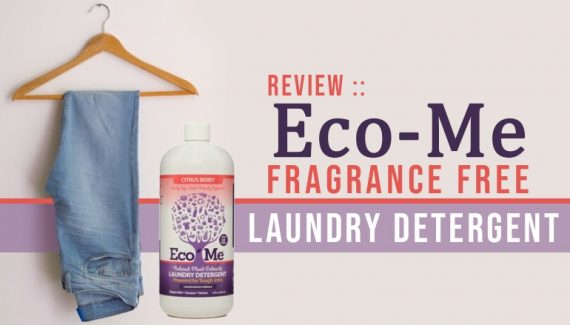Safe Household Cleaning is reader-supported. All reviews are independent and any products reviewed are purchased by the site owner. To help fund this model, some of the links on the site are affiliate links. If you decide to make a purchase from one of these links, this site will receive some commission. At no cost to you. It helps keeps this place running. Learn more
If you regularly clean your house, you are at a higher risk of suffering from some form of contact dermatitis than if you don’t.
There have been many studies on the subject, some with dramatic results. For example, one study found that over 81% of cleaners suffer from some form of occupational hand dermatitis. [1] 81%!
Those numbers are scandalous.
Who hasn’t worried that they have some allergic reaction or rash from their laundry detergent?
Most literature will recommend you avoid certain ingredients. But cleaning product manufacturers aren’t obliged to disclose the ingredients in their products.
So what do you do?
Read on.
We’ll be explaining:
- What Dermatitis is
- Describe the symptoms of the various types of dermatitis
- Show you just how common this condition is
- Highlight the ingredients to avoid
- Before giving some practical measures on how to reduce your risks
What is Dermatitis?
There are many types of dermatitis, and it’s thought that between 200-230 million people globally each year are diagnosed with various forms of dermatitis (around 3% of the population) [2]. The symptoms can be subtly different between conditions, but all types of dermatitis involve inflammation of the skin, resulting in a combination of:
- Red skin
- Rashes or blistering
- Itching or stinging
- Thickened or scaling skin
Different types of dermatitis can present with similar symptoms, and in many cases co-exist, so it’s essential that those affected seek a formal diagnosis from a doctor. If the dermatitis is difficult to diagnose or treat, specialist advice from a dermatologist should be sought.
Types of Dermatitis
The three most common types of dermatitis are eczema, contact, and seborrheic. If cleaning products are thought to be the cause of the dermatitis, a person will be diagnosed with ‘contact dermatitis’, which can further be categorized as ‘irritant’ or ‘allergic’ [3].
- Contact dermatitis – inflammatory skin reaction to an external source
- Irritant contact dermatitis – inflammation in response to skin damage (for example, exposure to the solvents in cleaning products)
- Allergic contact dermatitis – an immune response to an allergen (for example, exposure to the fragrances in cleaning products)
How Common is Contact Dermatitis?
If 200-230 million people globally are diagnosed with non-specific dermatitis each year, around 40% of these will be due to contact dermatitis [2]. Within these cases of contact dermatitis, roughly 80% will be irritant contact dermatitis – allergic contact dermatitis is much less common. Contact dermatitis affects more women than men, and the occupations with the highest risk are: cleaning, cookery, hairdressing, and healthcare [4].
The prevalence of hand dermatitis among cleaners has been shown to be between 10-28%, and up to 36% in those that regularly use products containing hydrochloric acid [4]. Adults are more likely to be diagnosed than children, but among adults there is no difference in the rates of diagnosis in those under or over 40.
What Causes Contact Dermatitis?
There can be many causes of contact dermatitis, and people react differently to common ingredients. This can make diagnosing dermatitis difficult, and in cases where the external source is unclear, a patch test should be carried out by an experienced dermatologist. Below is a summary of common irritants and allergens (Table 1).
| Type of Ingredient | Description | Examples | |
| Class | Chemicals | ||
| Irritants | Ingredients that may damage the skin, causing irritant contact dermatitis. | Bleaches | Sodium hypochlorite, hydrogen peroxide, sodium dithionite |
| Surfactants | SLS, ALS, cocamidopropyl betaine | ||
| Enzymes | Protease, lipase, amylase | ||
| Solvents | Propylene glycol | ||
| Acids | Hydrochloric acid, sulfuric acid | ||
| Alkalis | Sodium or potassium hydroxide | ||
| Allergens | Ingredients that may cause an immune hypersensitivity response, causing allergic contact dermatitis. | Fragrances | Limonene, geraniol, cinnamal |
| Preservatives | Methylchloroisothiazolinone, formaldehyde | ||
| Dyes | Often proprietary and unlisted | ||
| Heavy metals | Lead, nickel (normally present as contaminants) | ||
Table 1. A summary of ingredients associated with irritant and allergic contact dermatitis [4-6].
Ingredients to Avoid
If you have been diagnosed with contact dermatitis that’s associated with cleaning product use, avoiding contact with the irritant or allergen can prevent recurrence. In 18-40% of cases, contact dermatitis can be completely cleared, with partial improvement seen in up to 80% [4]. The difficulty is identifying exactly which ingredient is causing the symptoms, further complicated by the lack of transparency in cleaning product labels.
As irritant contact dermatitis is much more common than allergic contact dermatitis, switching to products branded as ‘fragrance-’ or ‘preservative-free’ may not help (although they may be milder, which can be of benefit). Similarly, products branded as ‘green’ or ‘natural’ may not contain less irritating ingredients, as these are not regulated terms.
How to Prevent Contact Dermatitis
Where possible steps to minimize contact with irritants or allergens should be taken.
Of course, this is difficult if the manufacturers don’t tell you whats in the product. and this is where we come in.
We refuse to review a product unless the manufacturer has fully disclosed the ingredients.
We will list these ingredients, so you know how well the product cleans and what it contains.
With the ingredients in mind, you can then monitor to see what products cause a reaction. This will probably involve some trial-and-error, but you’ll eventually be able to target the ingredients that cause you or your family some problems.
In addition
- Rinse skin with an emollient soap substitute as soon as possible after contact
- Use cotton-lined rubber gloves, and remove these regularly to prevent sweating
- Frequently apply emollient creams
- Follow the product instructions, and always use in a well-ventilated area
- Never mix cleaning products (this can increase the risk of releasing volatile compounds, which may irritate the lungs, exacerbating asthma)
References
[1] Liskowsky J, Geier J, Bauer A. (2011) Contact allergy in the cleaning industry: analysis of contact allergy surveillance data of the Information Network of Departments of Dermatology, Contact Dermatitis. 2011 Sep;65(3):159-66
[2] Vos, T., Allen, C., Arora, M., Barber, R. M., Bhutta, Z. A., Brown, A., & Coggeshall, M. (2016). Global, regional, and national incidence, prevalence, and years lived with disability for 310 diseases and injuries, 1990–2015: a systematic analysis for the Global Burden of Disease Study 2015. The Lancet, 388(10053), 1545-1602.
[3] Nosbaum, A., Vocanson, M., Rozieres, A., Hennino, A., & Nicolas, J. F. (2009). Allergic and irritant contact dermatitis. European Journal of Dermatology, 19(4), 325-332.
[4] Royal College of Physicians. (2011). Diagnosis, management and prevention of occupational contact dermatitis. [Accessed: 4/6/18] www.rcplondon.ac.uk
[5] Bauer, A. (2013). Contact dermatitis in the cleaning industry. Current Opinion in Allergy and Clinical Immunology, 13(5), 521-524.
[6] Magnano, M., Silvani, S., Vincenzi, C., Nino, M., & Tosti, A. (2009). Contact allergens and irritants in household washing and cleaning products. Contact Dermatitis, 61(6), 337-341.



No Responses Yet